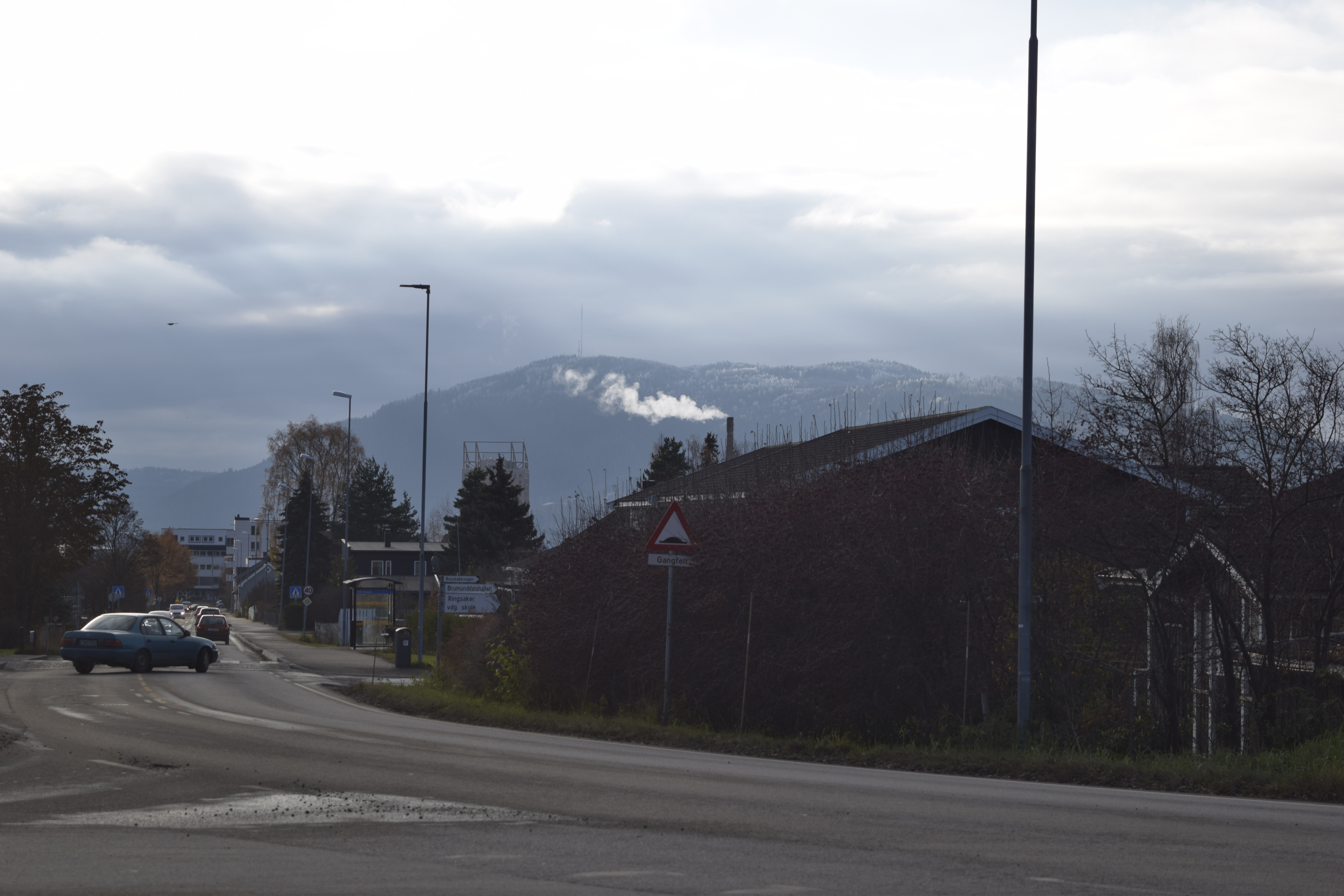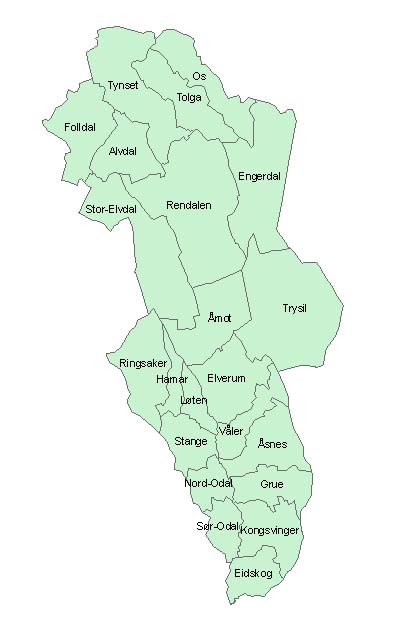|
Arbeideren (Brumunddal)
''Arbeideren'' was a Norwegian newspaper, published in Brumunddal in Hedmark county. ''Arbeideren'' was started on 16 March 1951 as the Communist Party organ in Hedmark county. It lent its name from two former newspapers called ''Arbeideren'', one in neighboring Hamar and one in Oslo. The party was reasonably strong in the county, with the last MP elected on the Communist Party ticket, Emil Løvlien Emil Løvlien (22 September 1899 – 4 June 1973) was a Norwegian forest worker, trade unionist and politician from Løten. He represented the Norwegian Labour Party, Labour Party until the split in 1923, and the Communist Party of Norway, C ..., hailing from Hedmark. However, it was not strong enough and the newspaper went defunct after its last issue on 22 October 1953. References Newspapers established in 1951 Publications disestablished in 1953 Defunct newspapers published in Norway Mass media in Innlandet Ringsaker Communist Party of Norway newspapers 1951 establ ... [...More Info...] [...Related Items...] OR: [Wikipedia] [Google] [Baidu] |
Brumunddal
Brumunddal is a town in Ringsaker Municipality in Innlandet county, Norway. The town is the administrative centre of the municipality. It is located on the shores of the lake Mjøsa, about north of the town of Hamar. The town is a small, densely populated area surrounded by countryside and farms. It is situated at the mouth of river Brumunda, running from the highlands into lake Mjøsa. Brumunddal Church is located in the village. The town has a population (2021) of 11,019 and a population density of . This makes it the largest settlement in all of Ringsaker municipality. The dominant industries are agriculture, ore refining, and tourism. Tine also has a large production facility in the town. Brumunddal is the hometown of the woman behind one of Norway's most popular frozen pizza brands, Grandiosa. The local football team is Brumunddal Fotball. Mjøstårnet, the world's tallest glulam structure, an 18-storey building, is in Brumunddal. Notable people * See also *List o ... [...More Info...] [...Related Items...] OR: [Wikipedia] [Google] [Baidu] |
Hedmark
Hedmark () was a county in Norway before 1 January 2020, bordering Trøndelag to the north, Oppland to the west, Akershus to the south, and Sweden to the east. The county administration is in Hamar. Hedmark and Oppland counties were merged into Innlandet county on 1 January 2020, when Norway's former 19 counties became 10 bigger counties / regions Hedmark made up the northeastern part of Østlandet, the southeastern part of the country. It had a long border with Sweden to the east (Dalarna County and Värmland County). The largest lakes were Femunden and Mjøsa, the largest lake in Norway. Parts of Glomma, Norway's longest river, flowed through Hedmark. Geographically, Hedmark was traditionally divided into: Hedemarken (east of the lake Mjøsa), Østerdalen ("East Valley" north of the town Elverum), and Solør / Glåmdalen (south of Elverum) and Odal in the very south. Hedmark and Oppland were the only Norwegian counties with no coastline. Hedmark also hosted some event ... [...More Info...] [...Related Items...] OR: [Wikipedia] [Google] [Baidu] |
Communist Party Of Norway
The Communist Party of Norway ( no, Norges Kommunistiske Parti, NKP) is a communist party in Norway. The NKP was formed in 1923, following a split in the Norwegian Labour Party. It was Stalinist from its establishment and, as such, supported the Soviet government while opposing Trotskyism. During the Second World War, the NKP initially opposed active resistance to the German occupation, in deference to the non-aggression pact between the Soviet Union and Germany. Once Germany terminated the pact and attacked the Soviet Union, the Communist Party of Norway joined the resistance. As a result of its role in the anti-Nazi struggle, the NKP experienced a brief surge in popularity immediately after the war, but popular sympathy waned with the onset of the Cold War. The ruling Labour Party took a hard line against the communists, culminating in Prime Minister Einar Gerhardsen's 1948 condemnatory Kråkerøy speech. Norwegian authorities considered the party an extremist organizatio ... [...More Info...] [...Related Items...] OR: [Wikipedia] [Google] [Baidu] |
Arbeideren (Hamar)
''Arbeideren'' ("The Worker") was a Norwegian newspaper, published in Hamar, Hedmark county. It was started in 1909 as the press organ of the Labour Party (Norway), Labour Party in Hedemarken and its adjoining regions, and was called ''Demokraten'' ("The Democrat") until 1923. It was issued three days a week between 1909 and 1913, six days a week in 1914, three days a week again between 1914 and 1918 before again increasing to six days a week. It was renamed to ''Arbeideren'' in 1923, and in the same year it was taken over by the Communist Party of Norway, Norwegian Communist Party. The Communist Party incorporated the newspaper ''Gudbrandsdalens Arbeiderblad'' into ''Arbeideren'' in 1924, and until 1929 the newspaper was published under the name ''Arbeideren og Gudbrandsdalens Arbeiderblad''. After ''Arbeideren'' had gone defunct, the name was used by the Communist Party for other newspapers elsewhere. The chief editors of the newspaper were Olav Kringen (1909–1913), Ole Hol ... [...More Info...] [...Related Items...] OR: [Wikipedia] [Google] [Baidu] |
Arbeideren
''Arbeideren'' ("The Worker") was a daily newspaper published in Oslo, Norway. It was started on 2 November 1929 as the official party newspaper from the Communist Party of Norway, Communist Party. It lent its name from a Hamar-based Arbeideren (Hamar), newspaper of the same name, which had gone defunct on 4 October. More directly, it replaced ''Norges Kommunistblad'' which just had gone bankrupt. Its first editor was Arvid G. Hansen, who had been the last editor of ''Norges Kommunistblad''. He remained in the chair until 1931. Reinert Torgeirson was editor from 1931 to 1932, followed by Erling Bentzen. In 1934 he was fired for not following the directions of the Comintern, the superior organ of the Communist Party of Norway. Henry W. Kristiansen became the new editor-in-chief, having been deposed as party leader. The publication was irregular, sometimes it came daily, sometimes weekly. From 1937 it was a daily newspaper, supported by the party while it siphoned support from other ... [...More Info...] [...Related Items...] OR: [Wikipedia] [Google] [Baidu] |
Norsk Presses Historie 1660–2010
''Norsk presses historie 1660–2010'' is a four-volume work about the press media history of Norway. It was published in April 2010 by Universitetsforlaget, and was the first book of its kind in Norway. Structure and production Hans Fredrik Dahl was the superior editor of all four volumes. The first volume, ''En samfunnsmakt blir til. 1660–1880'' was edited by Martin Eide. The second volume, ''Presse, parti og publikum. 1880–1945'' was edited by Rune Ottosen. The third volume, ''Imperiet vakler. 1945–2010'' was edited by Guri Hjeltnes. The fourth volume, ''Norske aviser fra A til Å'' was edited by Idar Flo. While the first three volumes are written in regular prose, the fourth volume is more of an encyclopedia with about 400 "newspaper biographies". Composed of 1925 pages across all volumes, the entire work cost and was finished after eleven years. Thirty people have provided a substantial amount of writing, while some 130 writers contributed with "newspaper biographies ... [...More Info...] [...Related Items...] OR: [Wikipedia] [Google] [Baidu] |
Parliament Of Norway
The Storting ( no, Stortinget ) (lit. the Great Thing) is the supreme legislature of Norway, established in 1814 by the Constitution of Norway. It is located in Oslo. The unicameral parliament has 169 members and is elected every four years based on party-list proportional representation in nineteen multi-seat constituencies. A member of Stortinget is known in Norwegian as a ''stortingsrepresentant'', literally "Storting representative". The assembly is led by a president and, since 2009, five vice presidents: the presidium. The members are allocated to twelve standing committees as well as four procedural committees. Three ombudsmen are directly subordinate to parliament: the Parliamentary Intelligence Oversight Committee and the Office of the Auditor General. Parliamentarianism was established in 1884, with the Storting operating a form of "qualified unicameralism", in which it divided its membership into two internal chambers making Norway a de facto bicameral parliament ... [...More Info...] [...Related Items...] OR: [Wikipedia] [Google] [Baidu] |
Emil Løvlien
Emil Løvlien (22 September 1899 – 4 June 1973) was a Norwegian forest worker, trade unionist and politician from Løten. He represented the Norwegian Labour Party, Labour Party until the split in 1923, and the Communist Party of Norway, Communist Party thereafter. He was the chairman of the Communist Party from 1946 to 1965, and served three terms in the Parliament of Norway. Pre-war life and career Emil Løvlien was born in Løten, Løiten as the son of smallholding, smallholder Herman Løvlien (1858–1941) and his wife Oline (1857–1932).. Retrieved on 28 December 2008. He was the younger brother of Ole H. Løvlien. Emil Løvlien attended secondary modern school from 1913, but left in 1914 to become a forest worker. In 1918 Løvlien joined the local branch of the trade union, Norwegian Union of Forestry and Land Workers. He also became involved in politics, and was selected as a member of the board of the local chapter of the Norwegian Labour Party, Labour Party. In 1 ... [...More Info...] [...Related Items...] OR: [Wikipedia] [Google] [Baidu] |
Newspapers Established In 1951
A newspaper is a periodical publication containing written information about current events and is often typed in black ink with a white or gray background. Newspapers can cover a wide variety of fields such as politics, business, sports and art, and often include materials such as opinion columns, weather forecasts, reviews of local services, obituaries, birth notices, crosswords, editorial cartoons, comic strips, and advice columns. Most newspapers are businesses, and they pay their expenses with a mixture of subscription revenue, newsstand sales, and advertising revenue. The journalism organizations that publish newspapers are themselves often metonymically called newspapers. Newspapers have traditionally been published in print (usually on cheap, low-grade paper called newsprint). However, today most newspapers are also published on websites as online newspapers, and some have even abandoned their print versions entirely. Newspapers developed in the 17th century, as ... [...More Info...] [...Related Items...] OR: [Wikipedia] [Google] [Baidu] |
Publications Disestablished In 1953
To publish is to make content available to the general public.Berne Convention, article 3(3) URL last accessed 2010-05-10.Universal Copyright Convention, Geneva text (1952), article VI . URL last accessed 2010-05-10. While specific use of the term may vary among countries, it is usually applied to text, images, or other content, including paper ( |
Defunct Newspapers Published In Norway
{{Disambiguation ...
Defunct (no longer in use or active) may refer to: * ''Defunct'' (video game), 2014 * Zombie process or defunct process, in Unix-like operating systems See also * * :Former entities * End-of-life product * Obsolescence Obsolescence is the state of being which occurs when an object, service, or practice is no longer maintained or required even though it may still be in good working order. It usually happens when something that is more efficient or less risky r ... [...More Info...] [...Related Items...] OR: [Wikipedia] [Google] [Baidu] |
Mass Media In Innlandet
Mass is an intrinsic property of a body. It was traditionally believed to be related to the quantity of matter in a physical body, until the discovery of the atom and particle physics. It was found that different atoms and different elementary particles, theoretically with the same amount of matter, have nonetheless different masses. Mass in modern physics has multiple definitions which are conceptually distinct, but physically equivalent. Mass can be experimentally defined as a measure of the body's inertia, meaning the resistance to acceleration (change of velocity) when a net force is applied. The object's mass also determines the strength of its gravitational attraction to other bodies. The SI base unit of mass is the kilogram (kg). In physics, mass is not the same as weight, even though mass is often determined by measuring the object's weight using a spring scale, rather than balance scale comparing it directly with known masses. An object on the Moon would weigh ... [...More Info...] [...Related Items...] OR: [Wikipedia] [Google] [Baidu] |




